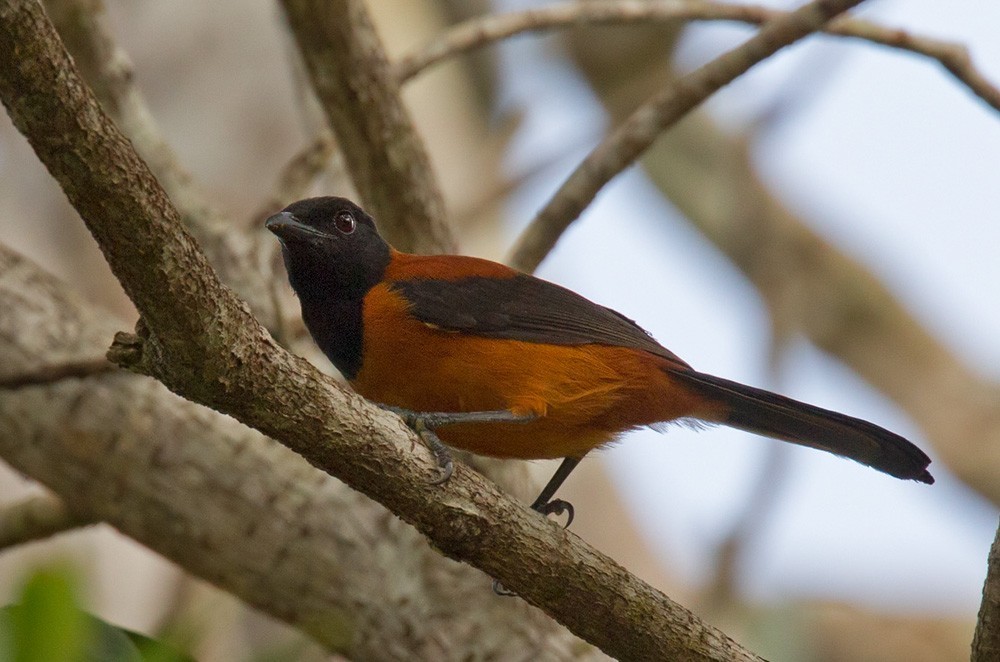Hooded Pitohui
A species of Typical Pitohuis Scientific name : Pitohui dichrous Genus : Typical Pitohuis
Hooded Pitohui, A species of Typical Pitohuis
Botanical name: Pitohui dichrous
Genus: Typical Pitohuis
Content
Description General Info
 Photo By Lars Petersson
Photo By Lars Petersson Description
The hooded pitohui is 22 to 23 cm (8.7–9.1 in) long and weighs 65–76 g (2.3–2.7 oz). The adult has a black upperwing, head, chin, throat and upper breast and a black tail. The rest of the plumage is a rufous chestnut. The bill and legs are black, and the irises are either reddish brown, dark brown or black. Both sexes look alike. Juvenile birds look like adults, except that the rectrices of the tail and remiges of the wing are tinged with brown. 
Size
23 cm
Nest Placement
Tree
Feeding Habits
Hooded Pitohui primarily consume figs, grass seeds, invertebrates like beetles, spiders, and ants, and occasionally small vertebrates. They forage in all forest strata, often in small familial groups or leading mixed-species flocks, showing a diverse and adaptive feeding behavior.
Habitat
The habitat of hooded Pitohui predominantly comprises forests, including forest edges and secondary growth areas. They can occasionally be found in mangroves and coastal beach trees. These birds typically inhabit regions characterized by hilly terrain and lower to intermediary mountainous areas. Hooded Pitohui is sometimes present in locales that are at sea level as well.
Dite type
Omnivorous
General Info
Feeding Habits
Bird food type
Distribution Area
The hooded pitohui is endemic to the islands of New Guinea. It is found widely across the main island, and also on the nearby island of Yapen. It inhabits rainforest, forest edge habitats and secondary growth, and sometimes mangrove forests. It is most commonly found in hills and low mountains, between 350–1,700 m (1,150–5,580 ft), but is found locally down to sea-level and up to 2,000 m (6,600 ft). It typically occurs at higher elevations than the lowland variable pitohui and lower than the (unrelated) black pitohui, although there is some overlap. 
Species Status
Common and widespread throughout New Guinea, the hooded pitohui is evaluated as a species of least concern on the IUCN Red List of Threatened Species. In one study of the effects of small subsistence gardens, populations of hooded pitohui were lower in disturbed agricultural habitat in the lowlands, compared to undisturbed forest, but actually increased in disturbed habitat higher in the mountains. 

 Photo By Lars Petersson
Photo By Lars Petersson Scientific Classification
Phylum
Chordates Class
Birds Order
Perching birds Family
Old world orioles Genus
Typical Pitohuis Species
Hooded Pitohui